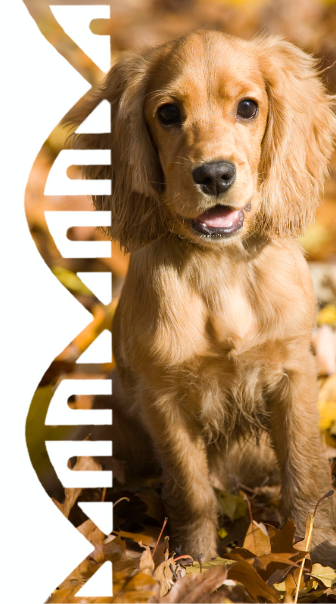
Dog genetic health testing has provided breeders, pet parents and veterinarians with a new tool for making better decisions about our canine companions. As a testing company focused on fast, accurate and affordable test results, it is our mission to help our customers make better and more informed decisions. The role we play is to not only provide an accurate test result in a timely manner, but also help people understand what the result means based on scientific research to date. Understanding the world of genetics is not always as straightforward as we would like and can vary based on the mutation being tested.
The two terms to understand when making decisions based on genetic testing are accuracy and clinical validity. The first term which refers to the test accuracy refers to the reliability of the test itself to detect a specific genetic mutation. The level of test accuracy is laboratory dependent and really identifies how good a laboratory is at consistently providing the correct result of whether the dog carries none, one, or two copies of a mutation. This is purely determined by how good the protocols and quality control measures are that should ultimately lead to a reproducible result.
In addition to accuracy, the second important term to know when making genetic testing based decisions is clinical validity. This term is focused on whether the detected DNA mutation is actually linked to a specific disease or condition, and how strongly the mutation can predict the presence, absence, or risk for a particular disease. For some tests, the causative genetic mutation has been discovered and typically has a very strong association with disease. It is usually the case that the discovered mutation has been demonstrated to be the actual cause of the disease. This means that all dogs tested to date have exhibited symptoms of the disease. An example of this type of mutation would be Neonatal Encephalopathy in Poodles. For this type of mutation, breeding and healthcare decisions can be fairly straightforward knowing the disease outcome is very strongly correlated with disease progression.
However, many genetic tests fall into a different category that is commonly referred to as a risk based association. This means that not all dogs that have the mutation will exhibit symptoms of the disease. These types of tests will typically be described as having “incomplete penetrance” or “variable expressivity”. This means that some animals that inherit a disease-associated mutation may never actually develop clinical signs or may develop milder symptoms. Breeding animals with these types of mutations can be tricky because while the dam and sire may not show symptoms of the disease, the puppies that inherit the mutation may go on to develop the associated condition. In many cases, diseases like this have other unknown genetic or environmental factors which influence the overall risk of developing disease which makes disease predictability more difficult.
There is also a small potential for any individual dog to exhibit disease symptoms even though they test clear for the mutations we are currently targeting. This is due to the fact that mutations yet to be discovered could lead to the same disease. One example of this is a category of diseases called Progressive Retinal Atrophy of which there are many different gene mutations known that give rise to the same clinical signs of PRA. It is also important to know that there most likely exists other unknown mutations that lead to PRA that will hopefully be uncovered with further research.
Even though interpreting your genetic test results in terms of predicting disease can be complicated, we are here to help. On our website, we provide background and result interpretations for each test to help better understand result implications and disease progression. If you need more information beyond what we provide on each test page, we are always here to answer any questions you may have. We want to provide you with the tools you need to make better breeding and healthcare decisions so that together we can improve the lives of our canine companions. So, please don’t hesitate to reach out and thanks again for being part of the team.
